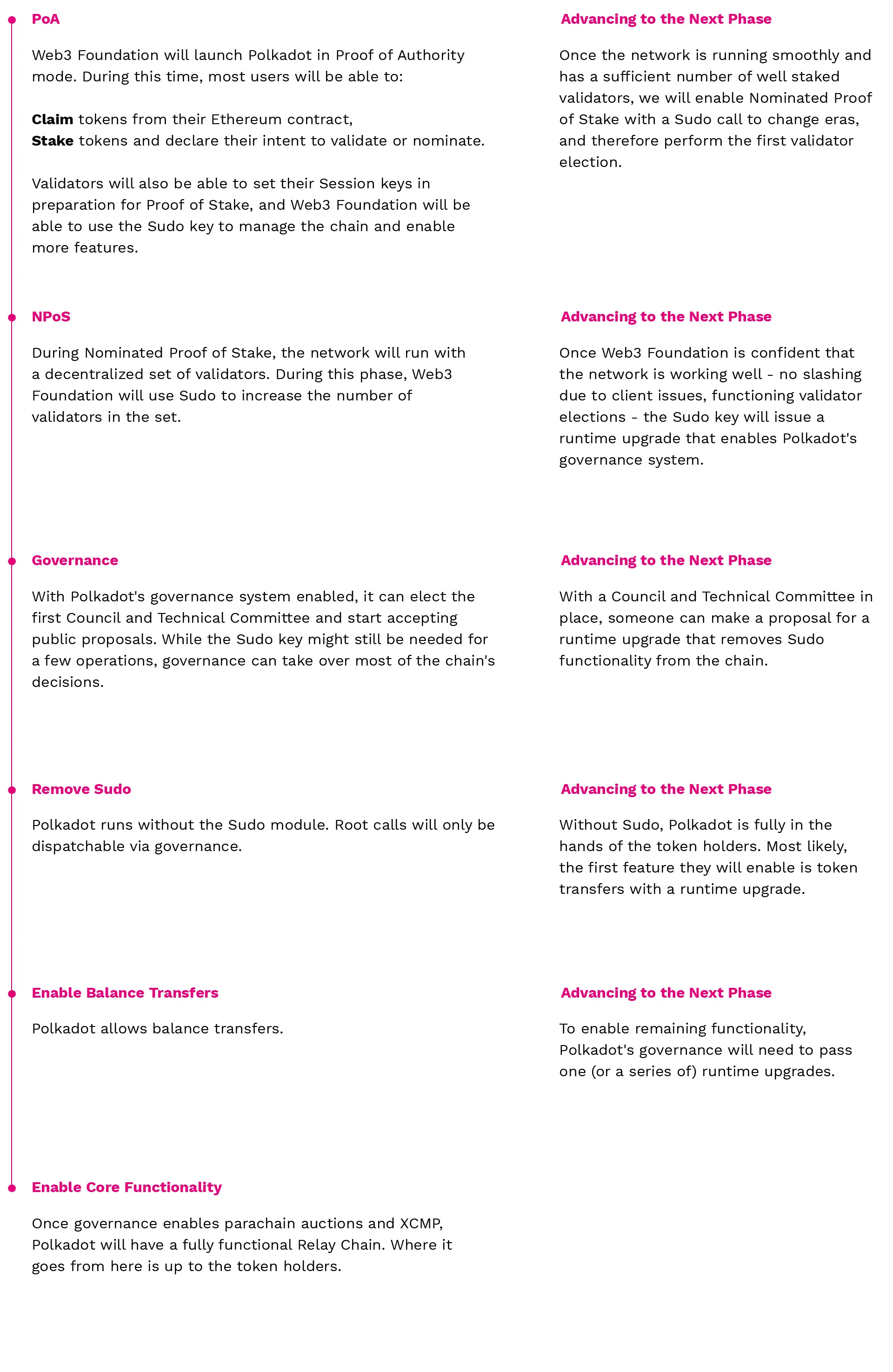Explaining the Polkadot Launch Process
The Polkadot network will have a phased roll-out plan, with important milestones toward decentralization marking each phase in the process.
 By Polkadot•May 8, 2020
By Polkadot•May 8, 2020
By: Logan Saether and Joe Petrowski
The Polkadot network will have a phased roll-out plan, with important milestones toward decentralization marking each phase. For more detail on each step in the process, watch the explanation from Polkadot and Kusama founder Gavin Wood included at the end of this article.
The Polkadot launch process begins when Web3 Foundation launches the first chain candidate, which is a proposal for a Polkadot Relay Chain. The initial chain has a restricted runtime that is limited to basic operations in order to gain confidence in the network’s stability. These limitations will be lifted through a series of governance decisions.
Polkadot Network Launch Phases

PoA
During the first phase, Polkadot will operate as a Proof-of-Authority (PoA) chain that is maintained by six validators belonging to Web3 Foundation. The chain’s limitations will only allow users to claim DOT tokens as well as submit their intention to validate or nominate.
NPoS
Once Web3 Foundation is confident in the stability of the network and there are a sufficient number of validator intentions, Web3 Foundation will use Sudo - a superuser account with access to governance functions - to initiate the first validator election. This election will transition the network from PoA into its second phase, Nominated Proof of Stake (NPoS), where the network is secured by the economic stake that is bonded to the validators.
Governance & Remove Sudo
After the chain is running well with a large validator set, the Sudo key will enable the suite of governance modules in Polkadot; namely, the modules to enable a Council, a Technical Committee, and public referenda. Once a Council and governance tools are in place, the public has the avenues to effect changes in the system.
A runtime upgrade initiated by public referenda will remove Sudo from Polkadot, leaving it in the hands of the token holders. Without Sudo, the chain will no longer be a candidate and will be a live, decentralized network.
Enable Balance Transfers & Core Functionality
The final stages of Polkadot’s rollout will involve unlocking the remaining functionality. One of the first post-Sudo upgrades will likely enable balance transfers in the network. After that, governance proposals will unlock the rest of Polkadot’s core functionality, like allowing the first parachains and cross-chain messages.
Learn More
To keep up with the Polkadot launch and everything else happening for the network, join the discussion on Telegram and Riot, or subscribe to the newsletter. Learn more about Polkadot in the Polkadot Lightpaper and the Polkadot Wiki.
Update 08.01.2021
The Polkadot network was launched and parachains are live on the network.











